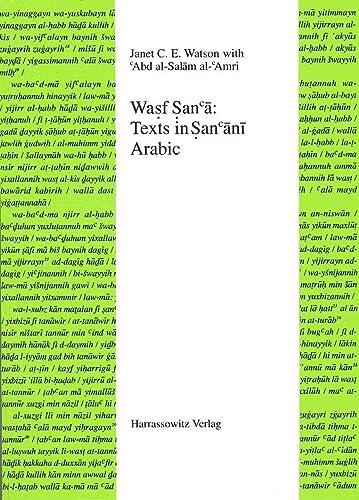
Wasf Sanca: Texts in Sancani Arabic
بواسطة
Abd Al- Salam Al Amri
,
Janet C Watson
لا توجد تقييمات بعد
Cookbooks
Travel
تنسيق
غلاف ورقي
صفحات
319
لغة
العربية
منشور
Dec 31, 2000
الناشر
Harrassowitz
الطبعة
1., Aufl. ed.
رقم ISBN-10
3447042664
رقم ISBN-13
9783447042666
الوصف
In the realm of linguistic studies, this volume delves into the intricate nuances of Sancani Arabic, shedding light on a dialect that is often overlooked yet rich in tradition and usage. The collaboration between Abd Al-Salam Al Amri and Janet C. Watson brings a wealth of knowledge and expertise, aiming to bridge the gap between academic exploration and the linguistic heritage of Arabic speakers.
The authors meticulously compile a selection of texts that showcase the distinctive features of Sancani Arabic, allowing readers to appreciate its unique phonetic and grammatical traits. With a keen focus on authenticity, the included materials offer insights into everyday life, culture, and practices of the Sancani community.
This work also addresses relevant bibliographical references, which provide further context and a roadmap for scholars interested in the broader implications of dialectal variation within the Arabic language. Through a bilingual format, it ensures accessibility for both Arabic and English readers, inviting a diverse audience to engage with the content.
By intertwining language and culture, the volume not only serves as a linguistic resource but also as a testament to the rich tapestry of human expression found within the Sancani dialect. It stands as an essential addition to the field for anyone intrigued by the depth and diversity of Arabic languages and their speakers.
The authors meticulously compile a selection of texts that showcase the distinctive features of Sancani Arabic, allowing readers to appreciate its unique phonetic and grammatical traits. With a keen focus on authenticity, the included materials offer insights into everyday life, culture, and practices of the Sancani community.
This work also addresses relevant bibliographical references, which provide further context and a roadmap for scholars interested in the broader implications of dialectal variation within the Arabic language. Through a bilingual format, it ensures accessibility for both Arabic and English readers, inviting a diverse audience to engage with the content.
By intertwining language and culture, the volume not only serves as a linguistic resource but also as a testament to the rich tapestry of human expression found within the Sancani dialect. It stands as an essential addition to the field for anyone intrigued by the depth and diversity of Arabic languages and their speakers.